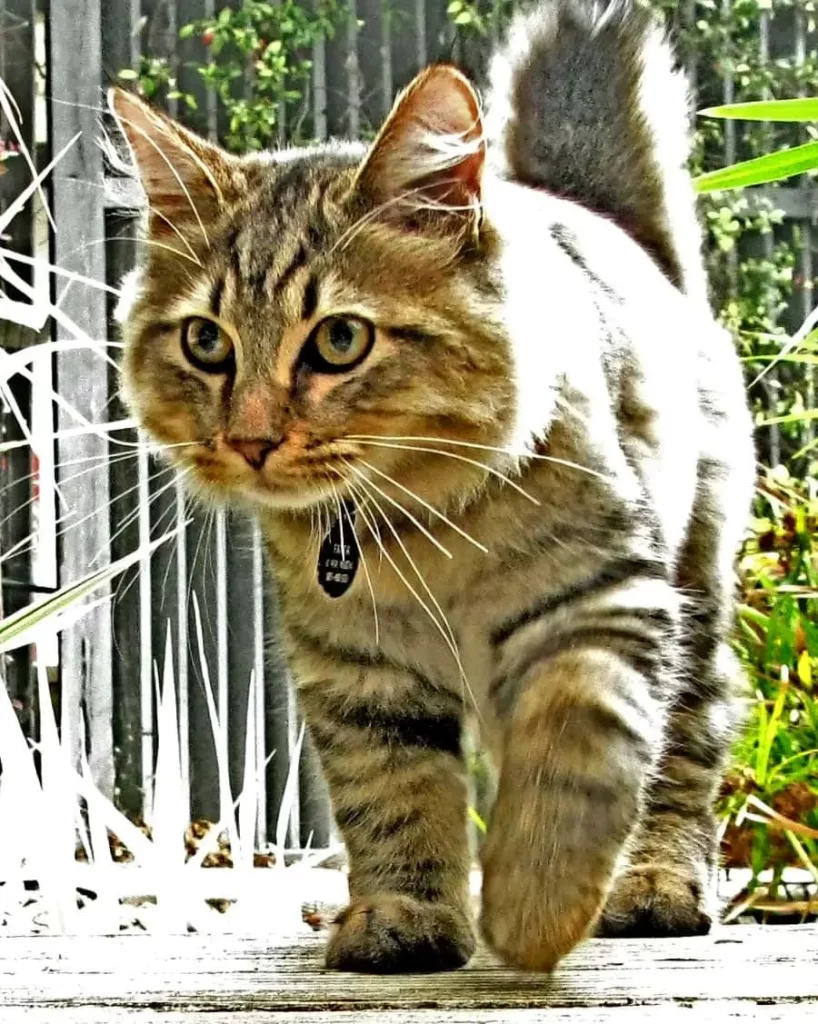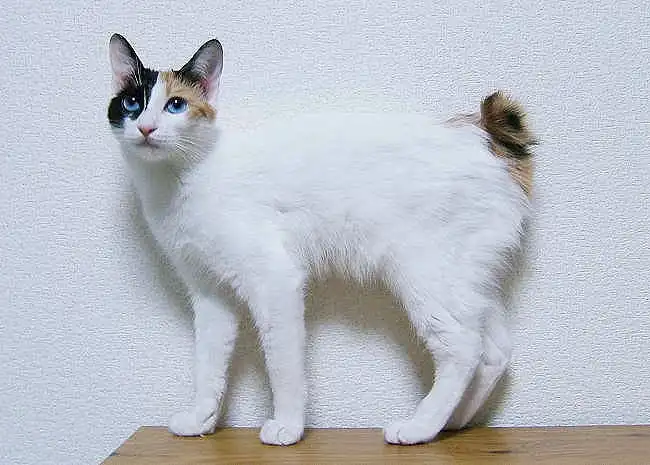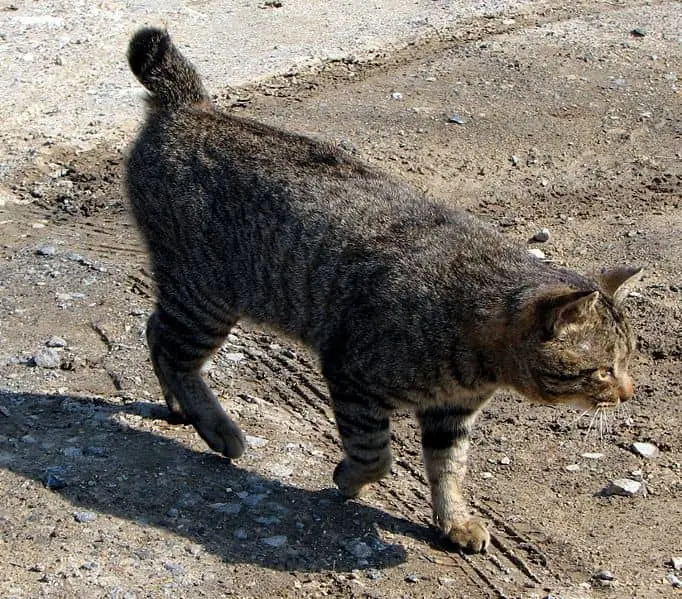Why does my cat have a short tail?
We often marvel at the unique traits and characteristics of our feline companions. One such intriguing feature is a cat with a short tail. Whether it’s a breed-specific trait or the result of an injury, understanding why your cat has a short tail can deepen your appreciation for their individuality.
In this blog, we’ll find the various reasons behind cats having short tails, exploring genetics, trauma, congenital abnormalities, and even controversial surgical procedures.
Why does my cat have a short tail?
Why does my cat have a short tail? Cats have a short tails due to a mutation in the gene called T-box transcription factor 4 (TBX4) and also due to genetic variations.
What Is the Average Length of a Cat Tail?
The average length of a cat’s tail varies depending on the breed and individual cat. On average, most domestic cats have tails that range from 9 to 11 inches (23 to 28 centimeters) in length.
However, it’s important to note that there is significant variation among different cat breeds. For instance, some breeds, such as the Maine Coon, are known for their long, bushy tails that can reach lengths of up to 16 inches (40 centimeters) or more.
Read Also: Why does my cat hate me?

On the other hand, certain cat breeds, like the Manx, are known for having naturally short or bobbed tails. Additionally, individual cats within a breed can also have slight variations in tail length.
Let’s find out the reasons why cats have short tails!
Reasons Behind Cats Short Tails
1. Genetics and Short Tails
Cat breeds with naturally short tails are a result of genetic variations that have been selectively bred over generations. One prominent example is the Manx breed. These cats are known for their distinctive lack of a tail or a significantly shortened tail.
Studies have identified a mutation in the gene called T-box transcription factor 4 (TBX4) as the probable cause for this trait in Manx cats.
Other cat breeds, such as the Bobtail, Japanese Bobtail, and American Bobtail, also exhibit naturally short tails as a result of genetic inheritance.
2. Trauma and Tail Damage: Cats Can Lose Their Tail
Cats are naturally agile and curious creatures, but accidents can happen. Tail injuries can occur when a cat’s tail gets caught in closing doors, car accidents, or other traumatic incidents.
Such injuries can cause damage to the tail, leading to a shortened appearance. In some cases, veterinarians may need to amputate part of the tail to prevent further complications or to alleviate pain and discomfort for the cat.
3. Congenital Abnormalities
Sometimes, cats are born with congenital abnormalities that affect their tails. These abnormalities can result in tails that are unusually short or deformed. One such condition is known as “short tail syndrome” or “brachyury” in cats.
Brachyury is a genetic disorder characterized by a shortened or absent tail. Studies have linked the brachyury gene mutation to tail abnormalities, and it is believed to be responsible for short tails in some cat breeds.
Read Also: How much hair does a cat shed in a day?
4. Surgical Tail Docking
Tail docking is a controversial practice involving the surgical removal of a cat’s tail. While it has been traditionally done for cosmetic purposes or in specific breed standards, it is important to note that tail docking is illegal and considered unethical in many countries.
Some breeders or owners may opt for tail docking to conform to breed standards or prevent tail-related injuries. However, scientific evidence supporting the necessity or benefits of tail docking in cats is lacking, and the procedure is increasingly discouraged.
5. Case Studies and Personal Experiences
Real-life stories can provide valuable insights into the world of cats with short tails. Many cat owners have shared their experiences and anecdotes about their feline companions.
Some owners have reported the joy and uniqueness of having a cat with a short tail, while others have discussed the challenges and potential health concerns associated with this trait.
These personal accounts highlight the diversity and individuality of cats with short tails.
Read Also: Can cats eat sausage?
10 Cats Breed with Short Tails
1. Manx
Originating from the Isle of Man, the Manx cat is recognized for its tailless or short-tailed feature. Some Manx cats have no tail at all, while others have a small “stub” or a long tail.

They come in various coat lengths and colors. Manx cats are known for their strong hind legs, rounded appearance, and friendly nature.
2. American Bobtail
The American Bobtail is a medium to large-sized cat breed with a naturally short tail. The tail is usually one-third to one-half the length of a regular cat’s tail and has a flexible, expressive quality.

American Bobtails have a muscular build, and a wild appearance, and come in various coat patterns and colors. They are known for their friendly, intelligent, and playful nature.
3. Japanese Bobtail
Originating from Japan, the Japanese Bobtail is famous for its short and unique tail, resembling a pom-pom.

The tail is usually flexible, wavy, and carried upright. Japanese Bobtails have elegant, slim body and triangular head, and come in a variety of coat colors and patterns. They are known for their affectionate, social, and active nature.
Read Also: Why Does My Cat Slap Me?
4. Cymric
The Cymric breed, also known as the Longhaired Manx, shares many similarities with the Manx breed, including the absence or shortness of the tail.

Cymrics have a rounded appearance, a sturdy build, and a thick, plush coat in various colors and patterns. They are known for their playful, gentle, and intelligent nature.
5. Kurilian Bobtail
The Kurilian Bobtail is a natural breed originating from the Kuril Islands, located between Russia and Japan. It features a short, pom-pom-like tail that can be expressive and curved.
Kurilian Bobtails have a muscular, semi-cobby body, a dense double coat, and come in different coat colors and patterns. They are known for their adaptable, affectionate, and independent nature.
6. Pixiebob
The Pixiebob is a medium to large-sized cat breed with a naturally short tail, usually between two to six inches in length. They have a robust, athletic build, a wild appearance reminiscent of a bobcat, and come in various coat colors and patterns.
Pixiebobs are known for their friendly, dog-like personality, intelligence, and adaptability.
7. American Curl
The American Curl is distinguished by its unique curled ears, but it also tends to have a shorter tail. The tail is proportionate to the body and can have a slight curve or kink.
American Curls come in both longhair and shorthair varieties, with various coat colors and patterns. They are known for their friendly, affectionate, and sociable nature.
Read Also: Why Does My Cat Keep Sniffing Me?
8. Scottish Fold
The Scottish Fold is recognized for its folded ears, but it can also have a shorter tail. The tail is proportional to the body and usually straight or slightly curved.
Scottish Folds have a rounded appearance and medium-sized body, and come in different coat colors and patterns. They are known for their sweet, gentle, and easygoing nature.
9. Serengeti
The Serengeti is a domesticated breed resembling a serval in appearance. It typically has a shorter tail that enhances its wild and exotic look.
Serengetis have a sleek, muscular body, a spotted or marbled coat resembling that of a wild cat, and come in various colors. They are known for their active, playful, and adventurous nature.
10. Munchkin
The Munchkin is renowned for its short legs, but it can also have a shorter tail in proportion to its body. The tail can be straight or slightly curved.
Munchkins come in different sizes and coat lengths, with various colors and patterns. They are known for their friendly, outgoing, and playful nature.
Read Also: How Long Can a Cat Go Without Urinating?
Care and Considerations for Cats with Short Tails
Caring for a cat with a short tail involves some specific considerations. Here are a few tips:
1. Tail Hygiene
While cats groom themselves, it’s important to pay attention to the area around the tail. Regularly check for any signs of irritation, inflammation, or injury. Keep the area clean and seek veterinary attention if any issues arise.
2. Handling and Play
Cats with short tails may have a slightly altered balance or sensitivity. Be gentle when handling or playing with them, avoiding any excessive pulling or tugging of the tail.
3. Potential Health Issues
Cats with short tails may be prone to certain health conditions related to the spinal column, such as spina bifida. Regular veterinary check-ups are crucial to monitor their overall health and address any potential concerns proactively.
Frequently Asked Questions
What is kinked tail cat?
A kinked tail cat, also known as a “kinked tail syndrome” or “kinked tail mutation,” refers to a cat with a tail that is bent or curved due to a genetic anomaly. The condition is characterized by an abnormal kink or twist in the tail, which can vary in severity.
The kinked tail is typically present from birth and is caused by a developmental defect in the cat’s vertebrae. It is often a result of a spontaneous genetic mutation or a hereditary trait passed down from one or both of the cat’s parents.
Why do some cats have deformed tails?
Cats can have deformed tails due to genetic mutations, injuries, developmental issues, congenital defects, or certain medical conditions.
Why is my cats tail crooked at the end?
If your cat’s tail is crooked at the end, it could be due to a previous injury or trauma.
Cats’ tails are composed of several small bones called vertebrae, and if one or more of these bones are fractured or dislocated, it can result in a crooked or bent tail. It’s also possible that the crooked appearance is due to a congenital abnormality or a genetic variation.
Conclusion
Cats with short tails captivate us with their distinctiveness and charm. Understanding the reasons behind their shortened tails enhances our appreciation for their uniqueness. Whether it’s a genetic variation, a past traumatic incident, or a congenital abnormality, each cat’s story is a testament to its resilience and adaptability. Let us celebrate these extraordinary felines, embracing their individuality and cherishing the love they bring into our lives.

